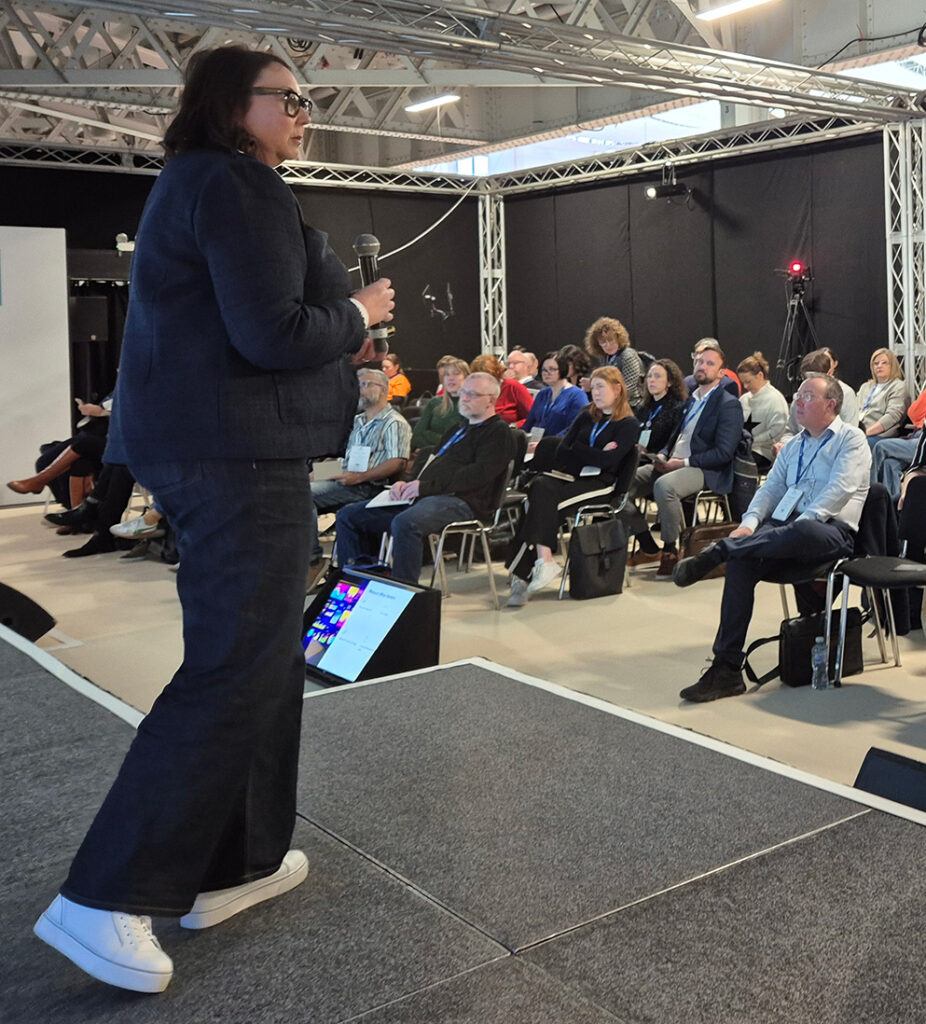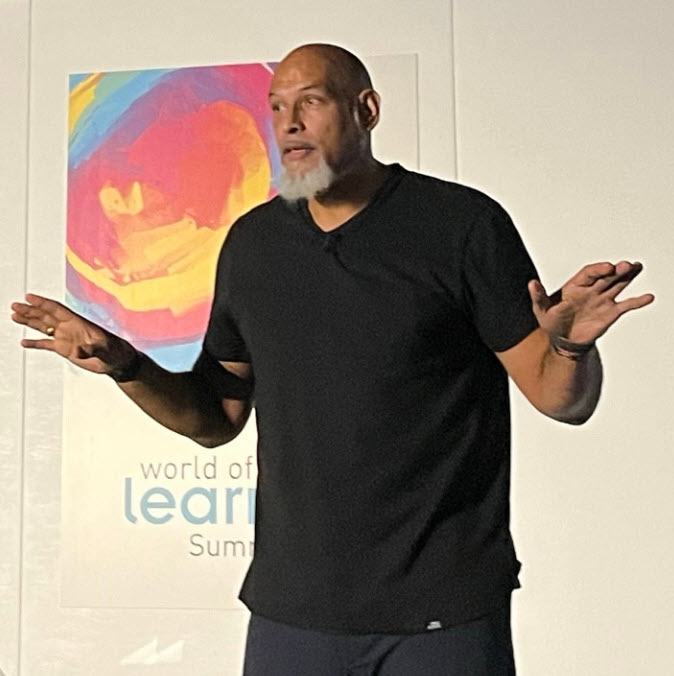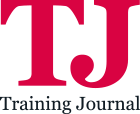How can L&D leaders drive real impact, influence strategy, and transform learning in the workplace? Be inspired by the industry’s leading thinkers and practitioners in this conference summary
What does it truly mean for L&D to have “a seat at the table”? It’s a phrase that sparks debate—some see it as the pinnacle of influence, while others dismiss it as an outdated ambition. It’s not just about being in the executive room; it’s about using the right data, influencing the right teams, and driving meaningful change.
Powerful insights from John Amaechi OBE, Charlotte Bolton, Mandy Woodman, and many more, painted a vivid picture of what it takes to make an impact in today’s fast-moving world of work. From onboarding that fosters true belonging to learning transfer strategies that ensure real-world application, L&D professionals explored how to shift from simply delivering training to embedding learning at the heart of business success.
With AI reshaping how we train, neuroscience offering new perspectives on engagement, and a call for curiosity-led learning over tick-box compliance, the summit challenged L&D to rethink its role. Whether it’s positioning yourself as a strategic partner, redefining leadership development, or overcoming the barriers to learner engagement, these sessions provided a wealth of actionable ideas.
Ready to explore the top takeaways and strategies that can help you maximise your impact as an L&D leader? Let’s dive in.
Strategies for maximising your impact as a learning and development leader with Rachel Moore

Rachel talked about ‘a seat at the table’ – often difficult for L&D to achieve, and sometimes derided, but Rachel highlights that it’s not just about the executive committee (Xco), it’s about the right data for the right teams to make an impact. On BlueSky Richard Williams commented, “L&D’s value isn’t just about having a seat at the table—it’s about keeping that table open to diverse perspectives and using data wisely to drive real change. When insights are shared effectively, everyone benefits.”
Rachel asked the audience, “What does it mean to have a seat at the table?” and answers included: be consulted, be heard, have a voice, involved in decisions, support, challenge.
The session continued with Rachel’s approach to impact as an L&D leader, including:
- Understand your business (when Rachel worked in a software company she had to understand about coding)
- Share your success stories across the business and the audience suggested this could be by writing blogs, LinkedIn posts, internal podcasts (And, of course, writing for TJ! -Ed)
- Marketing your brand, what are people saying about you when you aren’t there?
- The best thing Rachel has ever done is “take some development and time for me, to enhance my own skills and knowledge and have reflection time.”
And Rachel had a last call to action: Be present and be passionate!
Keynote with John Amaechi OBE
Vera Woodhead and Phil Walsh both covered the keynote on social media for TJ.
Vera shared that John said, “The future is not skills, the future is Learning. We have made leadership, storytelling, and comms… dull.”
And that “What makes us human? Intrigue, curiosity. Forgetting is part of learning. Learning is not ‘skills’. [We need to] embrace role agnostic competence – need to build cognitive flexibility, problem solving, collaboration.”

Phil summarised John’s presentation about learning: “The future is not skills the future is learning. Learning has become boring a tick box, compliance based gate activity. How can we change what learning means, how can we reinvigorate the cognitive excitation? Part of what makes us human is the option for intrigue, even at work! The skills we need to build such as effective creative decision making and meaningful conversations, flexible cognitive thinking, all these skills are needed whilst being under pressure. We need to develop these skills through learning. Not through traditional learning, but a new wave of curiosity inspired learning. ”
Both shared that John highlighted that leadership characteristics deemed important by C-suite executives included charisma and confidence, with John emphasising, “That’s nonsense! We all know leaders whose leadership abilities would be improved 100% if they were only just a little LESS confident. In this era of constant change. We rate Vision, empathy and EI as key to the leadership success. This is what we need to help people develop.”
The critical role of L&D in effective onboarding with Yashika Kaushal and Peter Plumlee
Peter Plumlee comments about onboarding that: “we are the maestros of belonging” and that we need people to feel comfortable in a new role and organisation. It was interesting that Yashika Kaushal talks about onboarding that has a fractured cadence within an organisation, with departments working in silos, thinking in the short term, missing connections, causing high turnover and wasting potential — all whilst focusing on feelings.
If you want to solve the onboarding problem look at:
- What do we want to do to culturally embed the person, including how they support the organisation vision?
- What skills development and support does the person need once they’ve started? Engage the manager.
- Teams have a huge impact on how someone feels in the organisation.
- Educating the person that the onboarding is also the responsibility of the learner and highlight what is expected of them.
Optimising L&D culture to thrive in a complex fast-changing environment with Mandy Woodman and Bertie Tonks
Mandy started by saying what is true in many organisations, that “L&D is seen as HR’s fun cousin. We are pigeon holed, with a catalogue for delivery, but we know we are so much more than this. It can be easy to silo in times of challenge, but we need to work together more. Being strategic, looking at workforce planning and more is part of how we tackle this.”
Bertie shared a great insight, that “The challenge is, if compliance sits within L&D, people start to resent learning. We need to partner in a different way and provide challenge.”
Vera shared that the pair suggested to build L&D presence and impact through: Anchoring to business strategy; Shifting the burden of responsibility; Personalising the experience; Leveraging science and technology; Embedding in strategic workforce planning.
Bertie finished with, “If we get more used to consultative selling, we will be more focused on a range of solutions, but talk more about the problems that really exist.”
Not just another tool: How to enable effective AI learning with Aki Friedrich
A key point from Aki’s session was him asking the question: Is there a difference between training people on AI and training them on traditional software tools?
Aki’s exploration included that, “Traditional software training is known input and known output, like typing in Word or cropping an image. The AI learning difference is that the outcome is unknown. The same prompt (eg in Midjourney) can give different solutions. This is fundamentally different when we think about training people in AI.” Martin Couzins, TJ Blogger and customer insights specialist, also found this an inspiring key point from World or Learning, read more here.
The L&D Exchange – Breaking the barriers to learner engagement
This conference session is a little different – no speaker, no presentation, just tables of facilitated conversation around a key L&D topic. It’s my favourite session of the day. Not just because it’s the end of a fabulous day and the networking drinks is next, but because of the connection, conversation and insights from colleagues in a relaxed atmosphere.

The question for the London Summit came in two parts:
- Part 1: What are the barriers to learner engagement that you face and what are the effects of low levels of engagement?
- Part 2: How have you overcome the barriers you face?
On BlueSky, Mark Berthelemy commented about the topic: “Do we really want ‘engagement’? Or are we looking for behaviour change and performance improvement? There are many ways to do them without giving me something that’s engaging. My take on it is that of Charles Handy: ‘I believe anyone can learn anything, provided they want to enough.’ When the motivation is there, engagement is built in.”
Mark makes a great point about the reason for us developing and facilitating learning interventions in the workplace, to create positive change and impact people’s performance on the job. L&D’s job isn’t one dimensional – there are many elements that we need to get right, and engagement is one of them. This can be from having that motivation to learn, through to designing and delivering an appropriate learning intervention, which should itself be engaging and entice the learner to get involved and have an experience.
Making Learning Transfer happen with Melanie Martinelli
Melanie commented that the “Paradox of learning transfer is that there are lots of factors to influence and design when you do your training. This is why there’s a problem, it’s a big, fractured problem. There’s lots we can’t influence, like the individual cognitive ability. Somethings are a tiny impact and not pragmatic to focus on. Remove the out of control things and small impact, and you have twelve factors left: the twelve levers of learning transfer.”
A suggestion from Melanie is that rather than doing a Training Needs Analysis, to do a Transfer Needs Analysis instead. For example, the relevance of content to the audience might be different for every individual, especially if they are different positions or departments internally, or from separate companies on an open course. When thinking about motivation, for example with compliance, there can be low motivation to completing an intervention. However contrast that with pay for a course yourself and the motivation is very different!
Application was a great point from Melanie. We often think about this in L&D, for example ensuring that people get training on a new platform or process only when they are about to use it and not six weeks prior. Melanie took the example further, highlighting with an example such as pilots not doing an emergency landing every day, therefore the application of their learning has more of a gap. So this means you need to refresh that often.
Melanie shared many other tips, including, “Remove content [from your intervention], include the transfer action planning in your session, 10-20% of the time throughout to focus on people’s mini steps. Remove satisfaction from feedback forms, it signals about making people happy. Instead focus on utility and relevance and how they will implement and what barriers there are, so that you have data you can action.”
How to avoid mistakes in leadership development with Lucy Davies
AMC Newton covered this one for TJ, and was shocked by the stat that only one in four employees feel that their manager cares about them as a person. Lucy delivered a Barbie inspired speech about the pressures of contemporary leadership and used drama, acting and theatre to get the message across.
Leveraging learning and development for transformative growth with Charlotte Bolton
Charlotte Bolton explored some of the approaches and success points on a journey of merging 33 different businesses into one brand. She L&D need to invest “in individual transformation and growth, as well as getting involved earlier in organisations transformation. We don’t grow in isolation.”
As there was a lot of change in this project, Charlotte used, amongst other things, the change curve, based on grief, to help everyone cope with what was happening in the business. This was for managers to support their teams, as well as deal with their own changes.
Charlotte shared three levels of change:
- Performance and awareness out come
- Developmental, skills, learning and competencies
- Transformation, beliefs and paradigm shift
L&D’s role in upskilling talent at scale with Madeleine Tierney and Danielle Ware
At the opening of the session the audience were asked which words they associate with the concept of L&D working at scale. The answers included: scary, costs and lack of engagement .
Madeleine focused on the Google Cloud customer training initiative that was “training at scale, on this project with a massive ambition, that we couldn’t make individual and personal for every single person.” Madeleine went on to say that people can find a lot of the content about their products, and that Google Cloud wanted to “package it, incentivise and make it visible and for individuals to take accountability for their own work.”
Contrasting this was Danielle, working at a UK childcare offering where nursery staff don’t have access to technology for a number of reasons, including that it has to be locked down around children for safe guarding and that there are adult-to-child care ratios, so the concept of any-time, any-where learning doesn’t work. In addition, the organisation has no learning management system, so she was working with a tech deficit. The final solution was a bottom-up approach where information and research was shared and people in the organisation were building the content and materials for L&D to polish and support.
Lots of learning
Throughout the exhibition there were many free seminars to attend. I went to Neuroscience with Stella Collins, where Stella highlighted that only 12% of skills are applied out of the €330 billion spent every year. Vera attended the Breeio session with Matthew Borg, who explored the us of AI for coaching, enabling individuals who wouldn’t normally have access to have a focused conversation. You can also hear from Matthew on the TJ podcast.
Neurodiversity caught the attention of Phil Walsh. Hayley Brackley stated that, “Neuro divergence shows up in many many ways. We can’t always predict and shouldn’t project how this divergence is showing up. People have their own stories and coping mechanisms that we can’t possibly begin to understand.” Hayley went on with advice, including, “Ask people how are they are doing, what other help they need. We can be multimodal. We can rethink timing… and we can design for the edges, rather than the learner in the middle of the bell curve.”
In the exhibition legendary journalist Kate Adie was interviewed, commenting about things they don’t put in the manual, including being enthusiastic, getting on with people, being a good listener when they don’t speak your language, are angry and in hostile circumstances.
Helen Marshall, who had the hot seat opposite Kate, said that the nugget that resonated most was, “Kate was talking about how, as a reporter in conflicts, her and her small team would judge how far ‘in’ to what was happening they could go to report. Far enough in to give the viewer a sense of what was happening, but not close enough to be at even higher risk to themselves. She said she wasn’t fearless. That she was balancing her fear with a need to share the truth without risking her life ‘too much’. Despite not being in a warzone, or great danger (thankfully) the question of “How far can I go?” is useful. How much risk can I take? How far can I push? What will getting ‘there’ allow me to do that I can’t do here?”
You can see more posts from the day:
#WOL25 on BlueSky
Jo Cook is Editor of Training Journal and virtual classroom specialist at her company Lightbulb Moment






